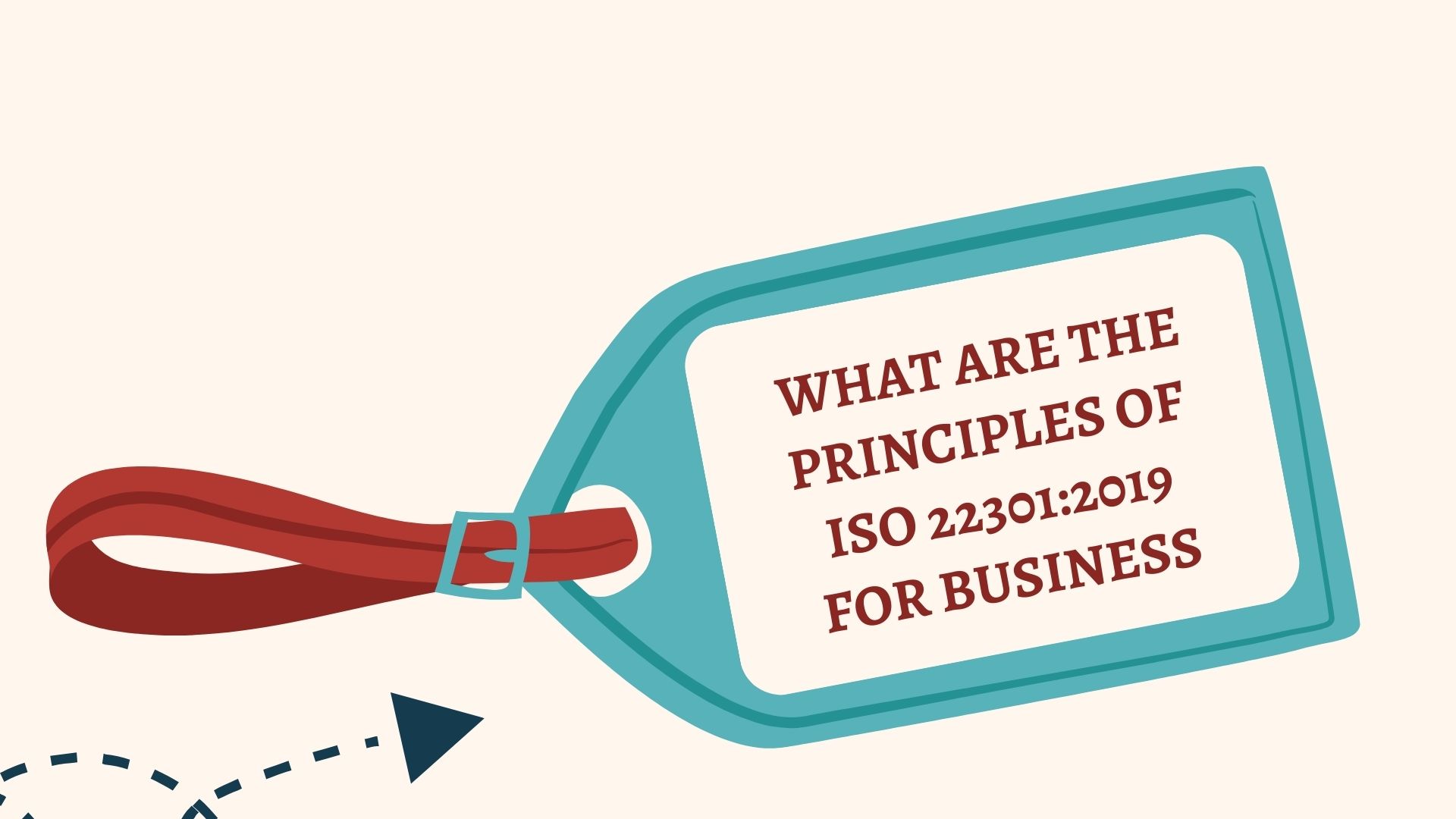In today's fast and ever-changing business world, companies must
deal with many risks that can mess up their work and put their future at risk.
Natural disasters, cyberattacks, pandemics, and other unforeseen events can
have catastrophic consequences. To ensure resilience and effective response
during such crises, the International Organization for Standardization (ISO)
developed ISO 22301:2019, the globally recognized standard for Business
Continuity Management Systems (BCMS).
What is ISO 22301?
The International Standard for Business Continuity
Management Systems (BCMS) is ISO 22301. It specifies the requirements for a
management system that helps organizations protect against, reduce the
likelihood of, and ensure recovery from disruptive incidents. ISO 22301 is
applicable to all types and sizes of organizations, regardless of their
industry, location, or complexity.
What is BCMS?
Business continuity management (BCM) is the process of
planning and preparing for potential disruptions that could affect an
organization's ability to deliver its products or services. BCM helps
organizations protect their reputation, assets, customers, and stakeholders
from the impacts of unforeseen events, such as natural disasters, cyberattacks,
pandemics or terrorism.
ISO 22301 is an international standard for business
continuity management (BCM) that outlines the requirements for creating,
maintaining, implementing, and upgrading a Business Continuity Management System
(BCMS). A BCMS is a set of policies, procedures and practices that enable an
organization to identify its critical functions, assess the risks and impacts
of disruptions, and develop strategies and plans to ensure continuity and
resilience.
Why do you need ISO 22301?
Disruptive incidents can happen at any time and can have
serious consequences for your business. They can affect your operations,
reputation, finances, legal obligations, and stakeholder relationships. Some examples
of disruptive incidents are natural disasters, fires, cyber-attacks, supply
chain issues, pandemics, and civil unrest.
Having a BCMS based on ISO 22301 can help you prepare for,
respond to, and recover from such incidents effectively and efficiently. A BCMS
can help you:
- Identify and prioritize the threats to your business
- Analyze the impact of potential disruptions on your
critical functions and processes
- Develop strategies and plans to prevent, mitigate, and
resume your operations
- Establish roles and responsibilities for business
continuity management
- Train and educate your staff on business continuity best
practices
- Test and exercise your plans regularly to ensure their
effectiveness
- Monitor and review your BCMS performance and make
improvements as needed
What are the principles of ISO 22301:2019 for business
continuity management systems?
The standard is based on the following principles:
Leadership and commitment: The top management of
the organization should demonstrate leadership and commitment to the BCMS by
establishing policies and objectives, providing resources and support, ensuring
integration with other management systems, and promoting a culture of continuity and resilience.
Risk-based approach: The organization should
identify and assess the risks that may affect its continuity and performance,
and implement appropriate measures to prevent, reduce or transfer them.
Continual improvement: The organization should
monitor and evaluate its BCMS performance and effectiveness and take actions to
address and gaps or opportunities for improvement.
Stakeholder involvement: The organization should
communicate and consult with relevant internal and external stakeholders, such
as employees, customers, suppliers, regulators, and partners, to ensure their
needs and expectations are met and their feedback is considered.
Lifecycle perspective: The organization should
consider the entire lifecycle of its products and services, from design to
delivery to disposal, and ensure that its BCMS covers all stages and processes.
Process approach: The organization should manage
its BCMS as a set of interrelated and interdependent processes that deliver the
intended outcomes.
PDCA cycle: The organization should apply the
Plan-Do-Check-Act cycle to its BCMS processes, which involves planning what to
do, doing what was planned, checking the results, and taking corrective actions
if needed.
What are the benefits of ISO 22301 certification?
ISO 22301 certification is a voluntary process that
demonstrates your compliance with the standard and your commitment to business
continuity excellence. By achieving ISO 22301 certification, you can:
- Enhance your reputation and credibility with
your customers, suppliers, regulators, and other stakeholders
- Gain a competitive edge in the market and
increase your opportunities for growth.
- Reduce your costs and losses due to disruptions
and downtime.
- Improve your resilience and ability to adapt to
changing circumstances.
- Foster a culture of risk awareness and
continuous improvement within your organization.
How can you get ISO 22301 certified?
To get ISO 22301 certified, you need to:
- Implement a BCMS that meets the requirements of
the standard.
- Conduct an internal audit to verify the
effectiveness of your BCMS.
- Hire an accredited certification body to conduct
an external audit of your BCMS.
- Receive a certificate of conformity from the
certification body after passing the audit.
- ISO 22301 certification is valid for three years, subject to
annual surveillance audits. You need to maintain and improve your BCMS during
this period to retain your certification.
Correlation of ISO 22301:2019
with ISO 22301:2012
ISO 22301:2019 is the latest edition of the international
standard for business continuity management systems (BCMS). It specifies the
requirements for planning, establishing, implementing, operating, monitoring,
reviewing, maintaining, and improving a BCMS that can protect against, reduce
the likelihood of, and ensure recovery from disruptive incidents. ISO
22301:2019 replaces ISO 22301:2012, which was the first edition of the
standard. The main changes between the two editions are:
- The adoption of the high-level structure and common text for all management system standards, which facilitates integration with other standards such as ISO 9001 and ISO 14001.
- The clarification of some concepts and terms, such as interested parties, scope, context and needs and expectations.
- The simplification of some requirements, such as documentation and management review.
- The introduction of some new requirements, such as actions to address risks and opportunities, communication during a disruption and performance evaluation.
Benefits of implementing ISO 22301
The benefits of implementing ISO 22301 include:
- Enhancing the organization's ability to anticipate,
prevent, prepare for, respond to and recover from disruptions
- Improving the organization's resilience and competitiveness
in the market
- Increasing the organization's confidence and trust among
its customers, suppliers, regulators and other stakeholders
- Reducing the potential losses and costs associated with
disruptions
- Complying with legal, regulatory and contractual
obligations related to business continuity
Who Is Able to Implement ISO 22301?
Organizations may benefit more from ISO 22301 than others,
depending on their level of risk exposure, regulatory obligations, and
stakeholder expectations. Some examples of organizations that can implement ISO
22301 are:
- Financial institutions need to ensure the
availability and security of their data and transactions.
- Healthcare providers need to maintain the
quality and safety of their services and products.
- Manufacturing companies that need to minimize
the impact of supply chain disruptions and production delays.
- Public sector entities that need to provide
essential services and protect public safety.
- Non-governmental organizations need to respond
effectively to humanitarian crises and emergencies.
Conclusion
In an increasingly uncertain world, ISO 22301:2019 is an
essential tool for organizations to effectively manage and respond to
disruptions. By implementing a robust BCMS, businesses can enhance their
resilience, protect critical functions, and maintain the trust of stakeholders.
ISO 22301 provides a systematic framework for identifying risks, establishing
strategies, and implementing plans to ensure business continuity. Embracing
this international standard positions organizations at the forefront of
preparedness, enabling them to navigate unexpected events and emerge stronger
in the face of adversity.
If you need any help regarding any kinds of ISO Certification in Delhi feel free to contact us our Toll Free number 1800-3070-2070, Our Business advisor will explain you in details.

